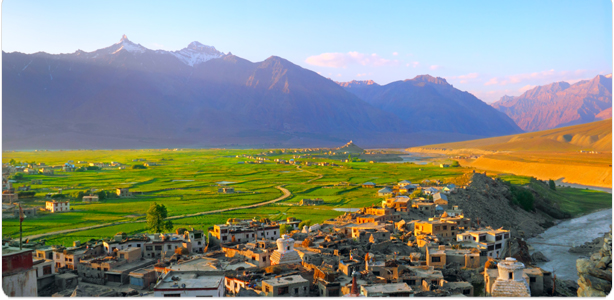Southernmost region of the state of Jammu and Kashmir.
Major Attractions
Searching for an extraordinary viewpoint and walkway? Visit the Ranbir Canal. There is a small garden along this canal, which serves as a cool picnic spot in summer.
A 5 km from the city centre, will bring you to the famous Bahu Fort & Gardens. Standing on the bank of the river Tawi, the fort is believed to have been constructed around 3000 years back by Raja Bahulochan. There is a temple inside the fort, which is dedicated to the Hindu goddess Kali. Later the Dogra rulers, developed a beautiful terraced garden 'Bagh-e-Bahu' around the fort, which attracts many tourists.
Nature lovers are fond of visiting the Mansar Lake. The lake is surrounded by dense forests and hills. People flock to this lake for boating and to participate in the Baisakhi festival (a food and crafts festival organised by J&K Tourism).
Moving towards the west of the city, you will come to Akhnoor, the historic town of Jammu. Situated on the banks of Chenab river, the town is associated with the legend of Soni-Mahiwal. You can also observe the influence of the Indus-Valley civilization here.
For pilgrims, the city of Jammu and the nearby area offers several religious holy places like Vaishno Devi, Raghunath Temple, Ranbireshwar Temple, Mahamaya Temple and City Forest, Peer Khoh and Peer Baba.
Food And Cuisine
You will find the same Kashmiri common dishes in Jammu as well, including a variety of non-veg items. But the specialty lies in the Rajput cuisine. Jammu offers a wide array of spicy and fried Rajput dishes .
Shopping
There is a lot to shop for in papier mache and wooden items. Jammu is also popular among tourists for its handicraft items. Apart from this, being a major pilgrimage, you can find various shrines of Gods and Goddesses here.
Flora And Fauna
Around the river areas, you will find a number of trees including maple, horse chestnuts, silver fir etc. The hills are rich in birch, rhododendron, erbers and a large number of herbal plants. These hilly area comprise of dense forests as well, which provide a habitat for the leopard, cheetah, deer, wild sheep, bear, brown musk shrew, and muskrat. Varieties of snakes, bats, lizards and frogs, andbirds species like chakor, snow partridge, pheasants, and peacock are also found in the region.
Best Time To Visit
October to February is considered the best time to visit Jammu.
According to local myths and a few records, Jammuis believed to have been founded by Raja Jamboolochan in 14th century. Being a major economic centre and a valuable tourist destination, Jammu draws lakhs of tourists from the world around every season.


